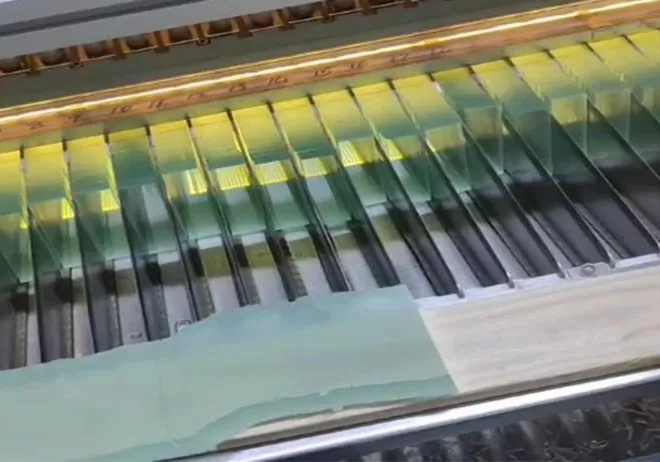Dec . 22, 2024 12:45 Back to list
what is laminated glass made of
What is Laminated Glass Made Of?
Laminated glass is a specialized type of safety glass that consists of two or more layers of glass bonded together by an interlayer, usually made of polyvinyl butyral (PVB), ethylene vinyl acetate (EVA), or other similar materials. This unique construction gives laminated glass its distinct properties, making it an essential material in various applications, from architectural design to automotive safety. But what exactly is laminated glass made of, and how does its composition influence its functionality?
Composition of Laminated Glass
At its core, laminated glass is created by sandwiching a layer of interlayer material between two sheets of glass. The process begins with selecting the types of glass to be used. The glass itself can vary in thickness, color, and treatment, depending on the desired aesthetic and performance requirements.
1. Glass Layers - The outer layers of laminated glass are typically made from annealed glass, tempered glass, or heat-strengthened glass. Annealed glass is the basic type of glass that is easily cut and formed. Tempered glass is treated to withstand greater mechanical stresses and is approximately four to five times stronger than regular glass. Heat-strengthened glass provides a middle ground with added strength and thermal resistance. The choice of glass affects the overall strength, clarity, and safety of the laminated product.
2. Interlayer Material - The most common interlayer used in laminated glass is PVB, a transparent and flexible plastic. PVB serves multiple purposes it bonds the glass layers together, provides structural integrity, and enhances the safety features of the glass. In the event of breakage, PVB holds the glass fragments in place, reducing the risk of injury from sharp shards. Other interlayer materials, such as EVA or polyurethane, can offer additional benefits like increased UV light protection, sound dampening, or varying degrees of visual clarity.
3. Adhesives and Coatings - In some cases, additional adhesives or coatings may be applied to enhance the laminated glass's properties. For instance, anti-reflective coatings can improve visibility, while solar control coatings can help regulate heat and glare entering a building. These treatments can be particularly beneficial in energy-efficient architectural designs.
Manufacturing Process
what is laminated glass made of

The process of making laminated glass begins with preparing the glass sheets and interlayer. The glass is cut to size and thoroughly cleaned to remove any contaminants that could interfere with adhesion. The interlayer is then placed between the glass sheets, and the assembly is subjected to heat and pressure in a specialized autoclave.
During this lamination process, the combined materials are heated to around 140 degrees Celsius and placed under pressure, typically integrating a vacuum to remove any air bubbles. This ensures that the interlayer bonds securely with the glass, resulting in a highly durable and cohesive product. Once cooled, the laminated glass is fully formed and ready for use.
Applications of Laminated Glass
Laminated glass is widely used in various applications where safety and security are paramount. Common uses include
- Automotive Industry Laminated glass is often used for windshields, as it prevents shattering that could lead to severe injuries during accidents. - Buildings and Architecture It is commonly found in storefronts, skylights, and residential windows, providing added protection against impacts and burglaries. - Interior Design Laminated glass is also used in furniture or decorative elements, where its aesthetic appeal and safety features are beneficial.
Conclusion
In summary, laminated glass is a composite material consisting of two or more glass layers bonded by an interlayer, predominantly made of PVB. Its unique composition not only enhances its strength and safety but also provides architects and designers with opportunities to create aesthetically pleasing and functional structures. As advancements in materials and technologies continue to evolve, laminated glass is poised to remain a versatile choice for various applications, providing both security and elegance in modern design.
-
Safety and Style with Premium Laminated Glass Solutions
NewsJun.24,2025
-
Reinvents Security with Premium Wired Glass
NewsJun.24,2025
-
Premium Float Glass Line for Modern Architecture
NewsJun.24,2025
-
Low Emissivity Glass for Energy-Efficient Architecture
NewsJun.24,2025
-
High-Performance Insulated Glass Solutions for Modern Architecture
NewsJun.24,2025
-
Elevates Interior Style with Premium Silver Mirror
NewsJun.24,2025
Related PRODUCTS














